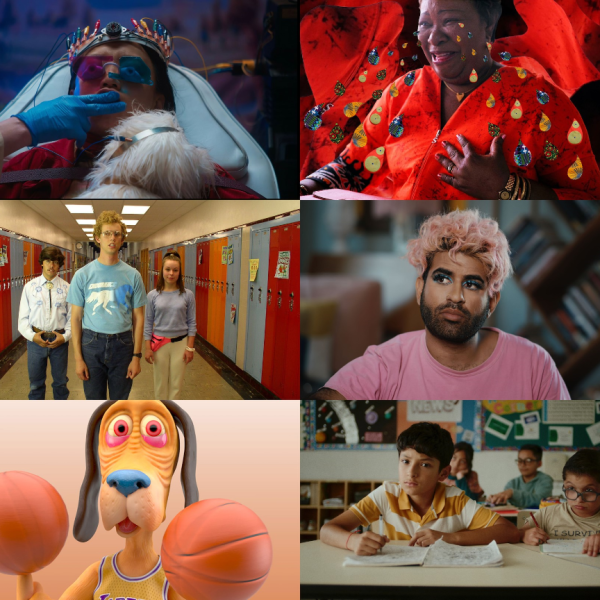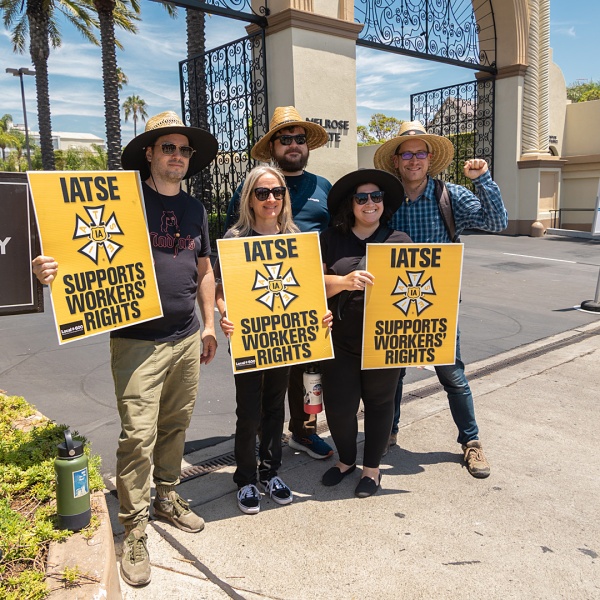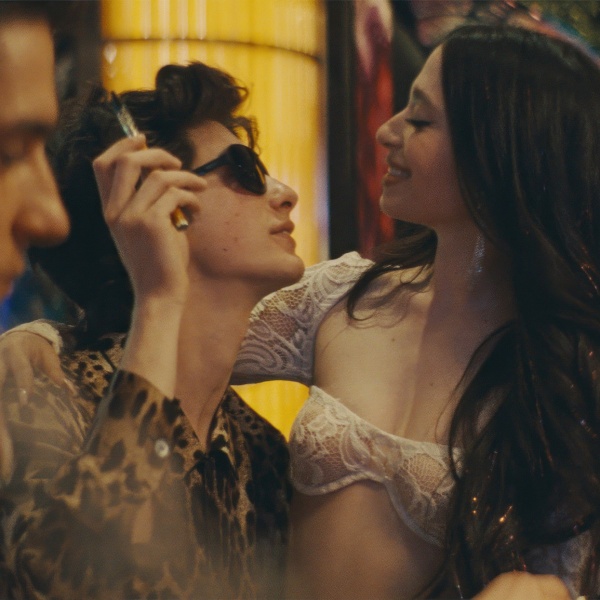Many times in life the anticipation is stronger than the fulfillment.
Few things were more anticipated in recent movie history than “Star Wars: The Force Awakens.” On many levels, it did almost live up to the hype: It’s still the number-one domestic box-office hit of all time in the U.S., unadjusted for inflation. Its reviews were overwhelmingly positive. It opened up a whole new era of storytelling for the franchise and deftly balanced the return of beloved characters from the Original Trilogy — Harrison Ford, in particular, delivering the most moving performance he ever gave as Han Solo — while introducing dynamic rising stars. It may have been overly indebted to “A New Hope” and mired in a few too many callbacks, but on the whole, “Force Awakens” was a movie that mined the deep emotion fans have for the franchise while pointing a path forward.
Yet even still, the anticipation that led up to “The Force Awakens” being released in December 2015 was far more energizing — and even cinematic — than the movie itself. We may never see its like again, certainly not with “Star Wars.” Its what led to a moment like that one 10 years ago today when Lucasfilm released the first official cast photo for the film.
The image is simple enough itself: The camera raised up for a big wide shot in a London studio where comfy chairs and couches were arranged in a circle. And there you see the people who’d make the movie: J.J. Abrams, who’d been announced as the director about three months after Disney acquired Lucasfilm in late 2012, and next to him on his right, the “Empire Strikes Back” and “Raiders of the Lost Ark” screenwriter Lawrence Kasdan, while on his left is Harrison Ford.
Just to give you a sense of the way this photo was broken down and scrutinized, here’s a THR piece that put thumbtack labels above each person’s head and then a summary below of who everyone was. At the time, we still didn’t know the film would even be called “The Force Awakens” — that wouldn’t be announced until November. It was still just Episode VII, and the building fervor for it was summed up in an Entertainment Weekly piece shortly after the Disney purchase where director George Nolfi said, “I can’t imagine a larger event-film for our generation than a sequel to ‘Return of the Jedi.’” Jon Favreau, not in any way associated with Lucasfilm then at that point, said “I want so bad for it to be good. Can you imagine?”
Fans speculated about what everything in the cast photo meant to an extraordinary degree. One ongoing “Star Wars” chat group on Facebook I participated in for some years had a consensus that Carrie Fisher, appearing to be engaged with Daisy Ridley in close conversation, showed that she was really taking the young star under wing. At this moment, there was literally only one photo of Ridley available altogether. Lucasfilm carefully knew how to turn an unknown into a star, just as they had with Mark Hamill in 1977.

Also, during this month of April in 2014, Lucasfilm had made a huge decision: It rendered all the previously published novels it had released through Del Rey, Penguin Random House’s sci-fi imprint, non-canon. Suddenly, the Expanded Universe many fans had come to love over the past 30 years was being called “Legends” — the stories themselves still had value, but they may not exactly have occurred in that universe the way we thought they did. So Han and Leia, who had three children in the Expanded Universe, none of them named Ben, but one of them who did turn to the Dark Side, ended up just having one child in the new movie. The “Save Legends” movement that sprang up on Facebook resulted in these fans spamming Del Rey editors for years in protest of their favorite stories supposedly being rendered irrelevant. That provided a crucial early glimpse of what would become the kind of fan backlashes to the new “Star Wars” that would spring up in years ahead, certainly after “The Last Jedi.”
The “Save Legends” group was a loud minority, however. Most fans were excited that, by wiping the slate clean, the new novels that Del Rey would publish would indeed be canon, and result in one consistent slate of storytelling from the screen to the page. That’s worked out only intermittently well since, with the movie tie-in novels feeling somehow even more ephemeral compared to what’s onscreen, but that’s another matter. (Full disclosure: This writer has authored multiple “Star Wars” books for Lucasfilm and a different imprint of Penguin Random House, DK.)
That slight stumble aside, anticipation kept growing at an ever-increasing pitch throughout 2014. When I hosted the “Star Wars: Rebels” panel at New York Comic-Con in October that year, Vanessa Marshall, who voiced the character of Hera, who’s gone on to appear in the live action series “Ahsoka” played by Mary Elizabeth Winstead, said that 2014 was the new 1976. As in, the year before the original “Star Wars” came out and that we were on the cusp of a whole new game-changing era for the franchise. Then finally the first teaser dropped the day after Thanksgiving, and fans loved it so much and gave Abrams such good will that even a fan-produced parody of George Lucas’s “special edition”-style version of that teaser came out shortly thereafter — that’s how much fans were willing to throw Lucas under the bus and embrace Abrams’ vision. The parody got 13 million views on YouTube, almost half as many as the teaser itself.
And the hype just kept building in the months after, as 2015 dawned. “Chewie, we’re home,” inaugurated our first glimpse of Harrison Ford back on the Falcon as Han Solo. And he was clearly the guest of honor — more than Mark Hamill or Carrie Fisher — at the 2015 San Diego Comic-Con, where a panel in Hall H flowed into attendees being shepherded by Lucasfilm onto the waterfront to hear an in-person John Williams conduct an orchestra playing “Star Wars” themes as the cast reassembled there and a fireworks show unfolded. I’ll never forget the Boss-style greeting the crowd gave Hamill: “Luuuuuuuke.” Or how, Kevin Smith, who had the next Hall H panel, suddenly had no audience because everyone had marched out to hear Williams’ orchestra. He said something like, “The Empire has cleared out Hall H, but like the Rebellion I will soldier on!”
Little did we know then on that San Diego waterfront, that Fisher only had little more than 17 months to live, and that just two and a half years later the “Save Legends”-style fans, coupled with some of those who always hated the prequels, and some who just had it out for this new trilogy led by a female character in Rey, would start a backlash against “The Last Jedi” that the franchise is still seeking to escape. (For our part, IndieWire named “The Last Jedi” one of the best films of the 2010s.)
That kind of anticipation epitomized by the release of the first Episode VII cast photo 10 years ago feels unlikely for “Star Wars” now. What was the last truly awe-inspiring moment the franchise has delivered? Maybe Luke appearing to save the day in the “Mandalorian” Season 2 finale? Even that eventually curdled into disinterest with fans criticizing subsequent appearances of the CGI-youthened character.
What the hype over the cast photo release showed, as just one marker on the long march toward Episode VII finally being released, is how effectively Lucasfilm used people’s memories, their affection for films they first saw over 30 years earlier, to power the hype — and make people think that new memories, like their cherished old ones, might be made in the time to come.
Did those new memories come? Time will tell. It took well over a decade for prequel revanchism to set in. But that “Force Awakens” marketing rollout showed one thing very clearly: Hype can be manufactured, but real emotion built around memories never can be.





